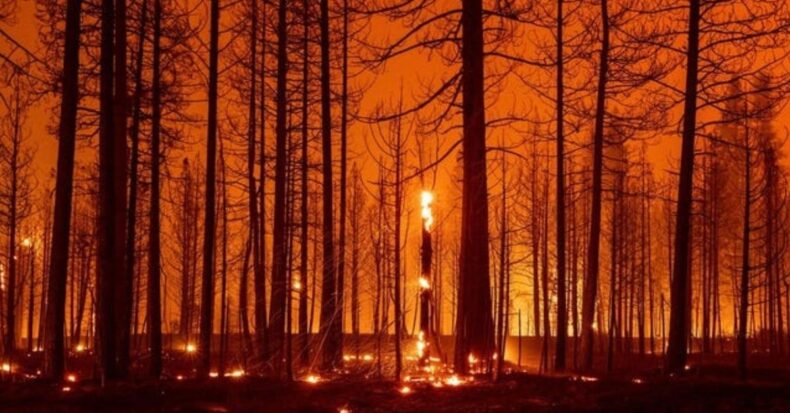Dixie Fire explodes to largest blaze in USA, Red flag warnings in California.
The Dixie Fire is now the largest single Wildfire in Californian History. Since the August Complex, the fire was the largest recorded fire in the History of the States.
It was just a complex fire made up of multiple fires. But Dixie Fire qualifies as the single largest Wildfire, though officially, it is the second-largest fire.
Destruction Caused:
Nearly a month after ignition, the gruesome Dixie Fire has burned almost 900 structures in Northern California and continues to manifest monstrous behaviour.
Destroying the charming Gold Rush town and 75% of Greenville, a warning was sent through Northern California and that it might take a few weeks to catch control over it.
Since its ignition on July 13, it has wiped out nearly 489,000 acres, an area larger than Los Angeles. As of Tuesday, Veteran Firefighters could only contain 25% of the fire.
The town was evacuated twice, but the first evacuation was cancelled since the firefighters could control the fire, saving the city. Still, the second evacuation became the necessity of the an hour and the town was lost to fire.
Currently, around one lakh people are under evacuation process across Plumas, Lassen and Tehama.
Weather and Pyro-cumulonimbus:

The officials captured a Hazy, yellow-orange sky. Around Monday, an explosive storm like cloud rose to 45,000 feats approximately to the eastern portion of the flames.
National Weather Service Incident Meteorologist for Dixie fire, Rich Thompson, said that the Pyro cumulonimbus was so intense that it caused light sparks and rose like a spinning tornado known as “fire whirls”.

A thin tendril-like cloud can be seen floating above the flame set. Thomspon exclaimed that it rose 300-400 feet above the west area of Lake Antelope, evacuated this week.
A tornado-like fire whirl is generated when warm air rises and starts spinning. As it forms a spiral, it collects smoke and ash and creates a fast-spinning vortex-like California.

Pacific Gas and Electric stated that the fire might have broken out due to its equipment near the utility power station in the Feather River Canyon. Later, it got mixed with another fire and resulted in forming Dixie.
Other officials stated that these are climate-induced wildfires. The weather is a part of the drought and heat, added to the climate change that has spurred up wildfires and wiped off the western U.S.
Predictions for this week:
Just as the firefighters gear up to control the blaze, conditions are expected to worsen this week.
Temperatures hovered in the 90s on Tuesday and are expected to reach 100s by Wednesday and Thursday, expecting a drop in humidity levels during the day.
Afternoon winds can be foreseen with gusts up 20 mph, carrying along with isolated thunderstorms that bring chances of dry lightning and inconsistent winds.
Firefighters are on a high alert. Out of 96 fuming fires, Dixie is one of them burning the West, said an incident commander. More than 25,000 firefighters have been positioned, with nearly 6,000 alone to Dixie fire.

California, which encounters peak fire season later in the year, is set to agonize more burnt hectares this time than ever before, making it the worse fire season.
The five largest wildfires in the history of the United States had been inscribed in the past three years, turning 2.7 million acres and 3,500 structures to ash.
Tap on the link to know about intresting wildlife and much more
Olympic Star Players Attend Independence Day. – Asiana Times













